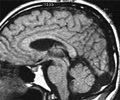Larger waistlines and higher levels of abdominal fat are linked to increased risk of vitamin D deficiency. Vitamin D levels are lower in individuals with higher levels of abdominal fat.

‘Larger waistlines are associated with higher risk of vitamin D deficiency. The higher the amount of abdominal fat, the lower the levels of detected vitamin D.’





Obesity is a global epidemic and contributes to an estimated 2.8 million deaths per year worldwide. Vitamin D deficiency is typically associated with impaired bone health but in recent years has also been linked with higher risks of acute respiratory tract infections, auto-immune diseases and cardiovascular diseases.Low vitamin D levels could, therefore, have wide-ranging and undetected adverse effects, although more research is required to confirm the role of vitamin D in these conditions. A link between low vitamin D levels and obesity has previously been reported but whether this effect is more associated with the type and location of fat was undetermined.
In this study, Rachida Rafiq and colleagues from the VU University Medical Center and Leiden University Medical Center in the Netherlands examined how the amount of total body fat and abdominal fat measured in participants of the Netherlands Epidemiology of Obesity study related to their vitamin D levels.
After adjusting for a number of possible influencing factors, including chronic disease, alcohol intake and levels of physical activity, they found that the amounts of both total and abdominal fat were associated with lower vitamin D levels in women, although abdominal fat had a greater impact.
However, in men, abdominal fat and liver fat, was associated with lower vitamin D levels. In all cases the greater the amount of belly fat, the lower the levels of detected vitamin D.
Advertisement
The researchers now plan to investigate what may underlie this strong association between vitamin D levels and obesity - whether a lack of vitamin D is predisposing individuals to store fat, or whether increased fat levels are decreasing vitamin D levels is not yet clear. However, this research points to a more important role for abdominal fat in the relationship, and a place to focus future studies on.
Advertisement
Source-Eurekalert















